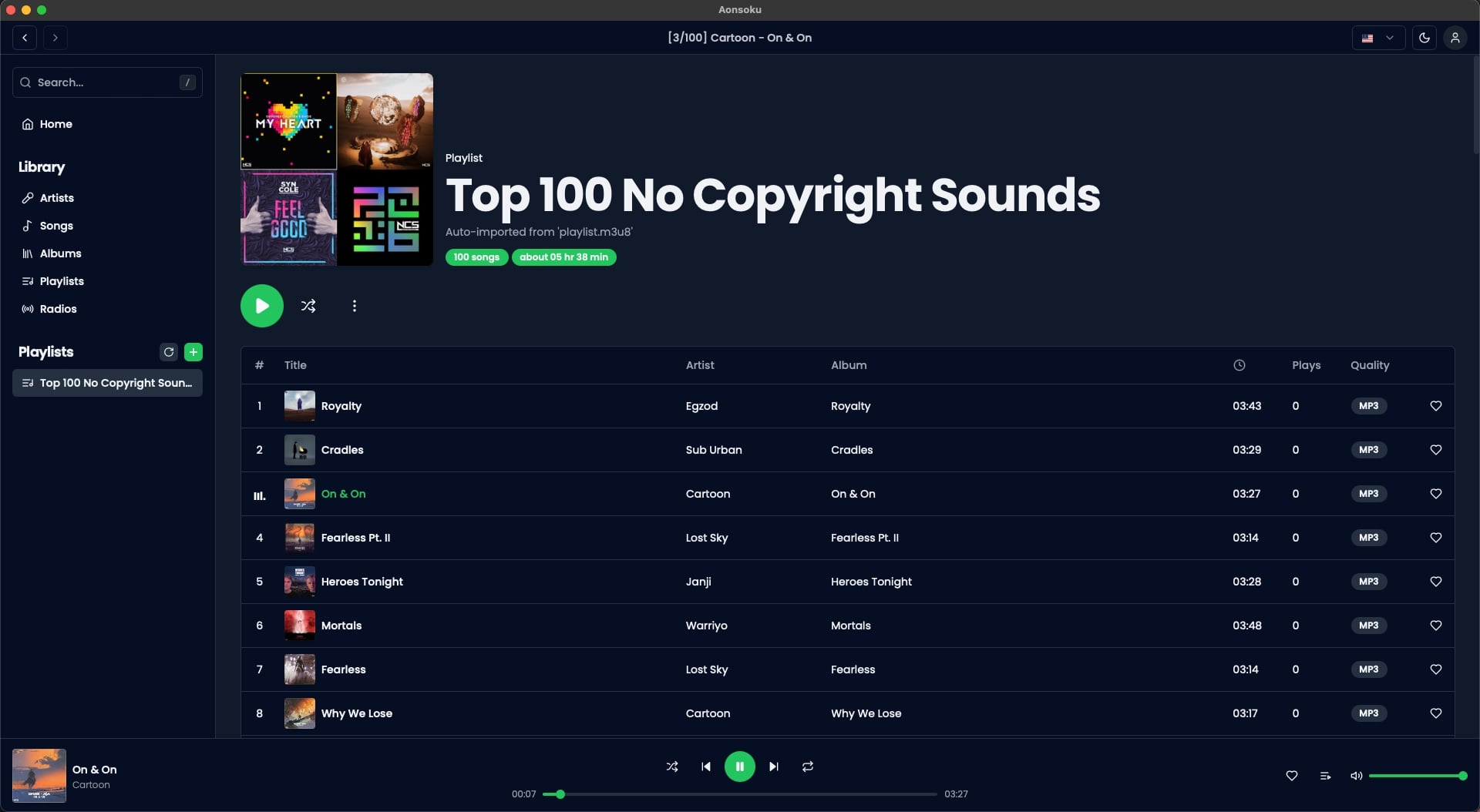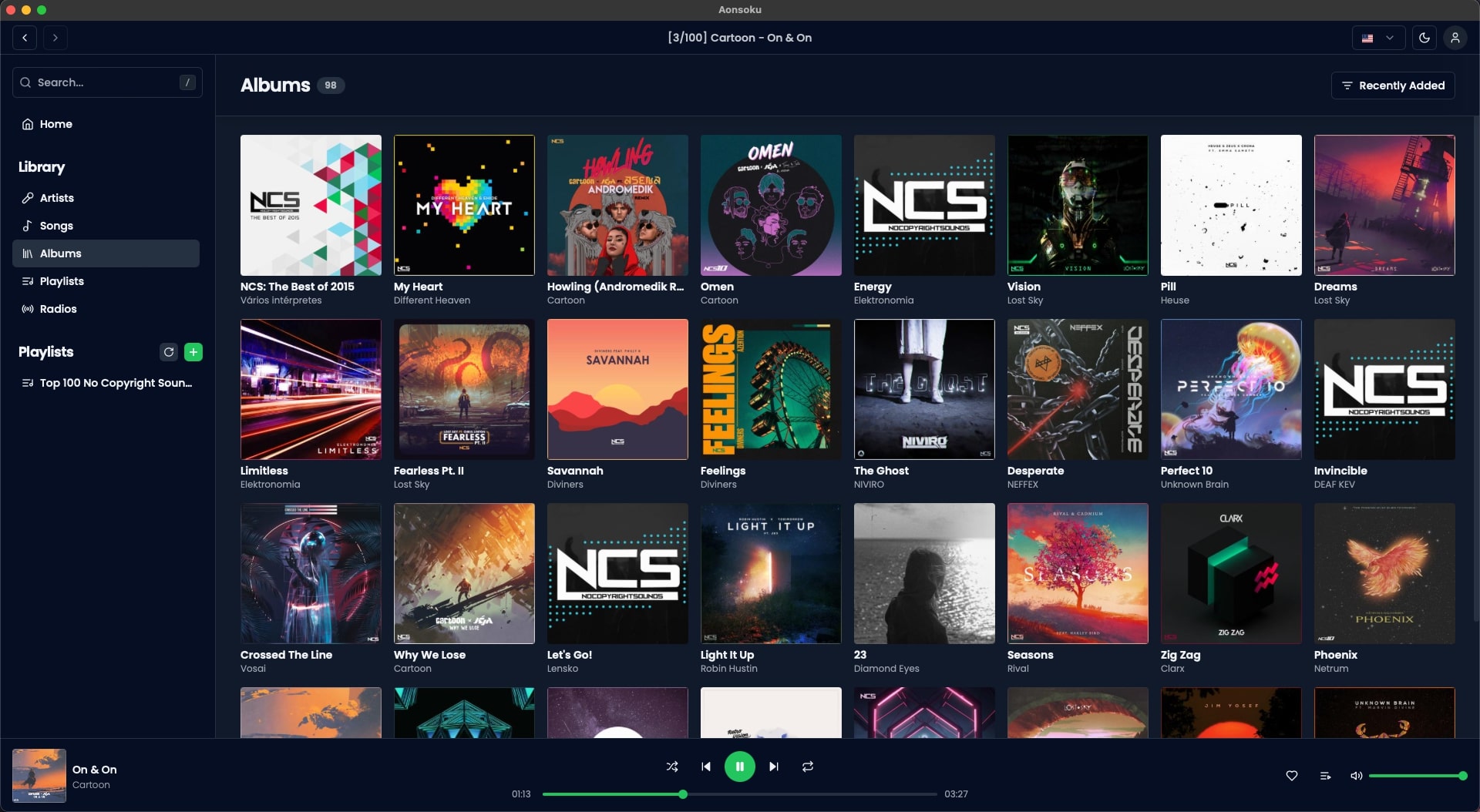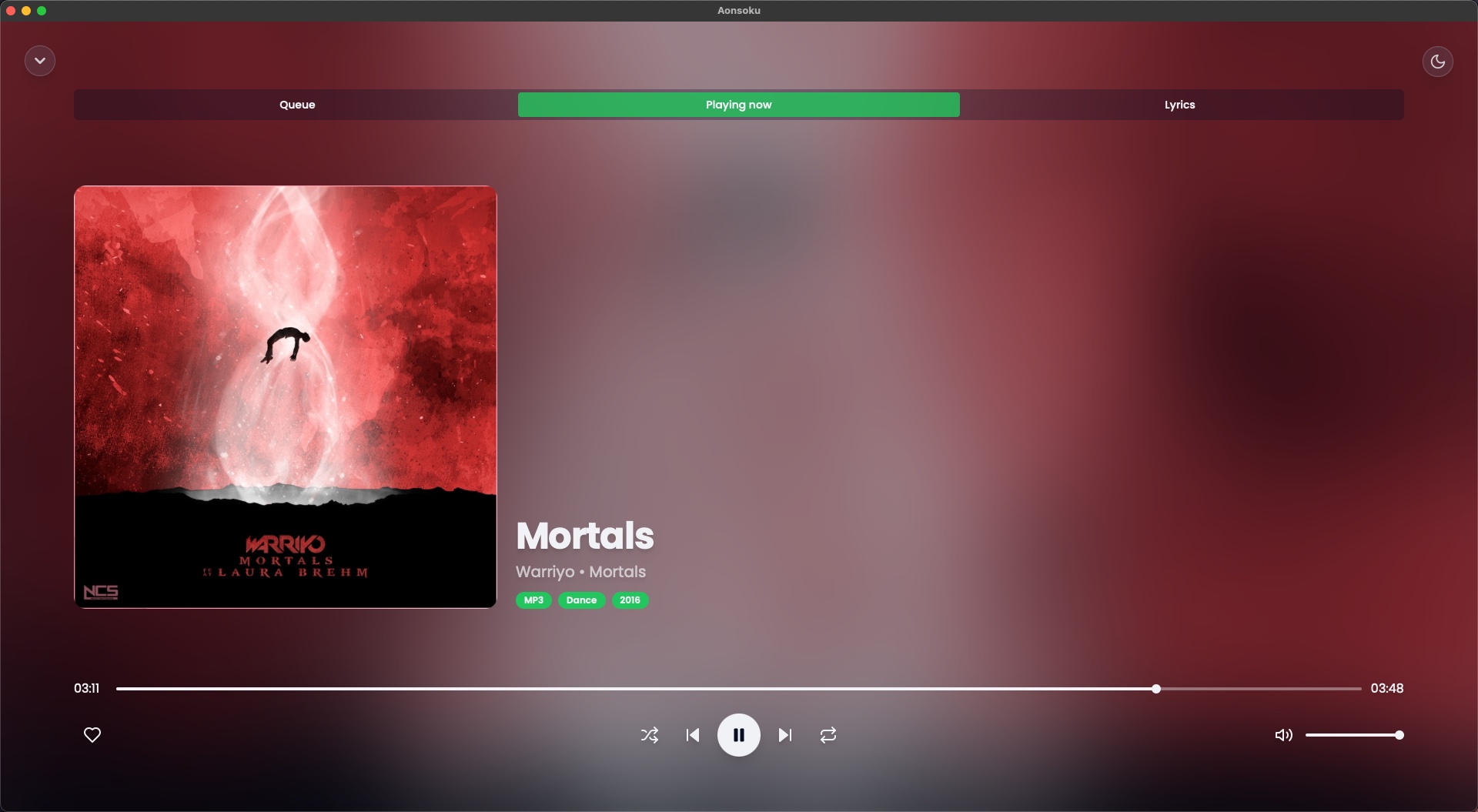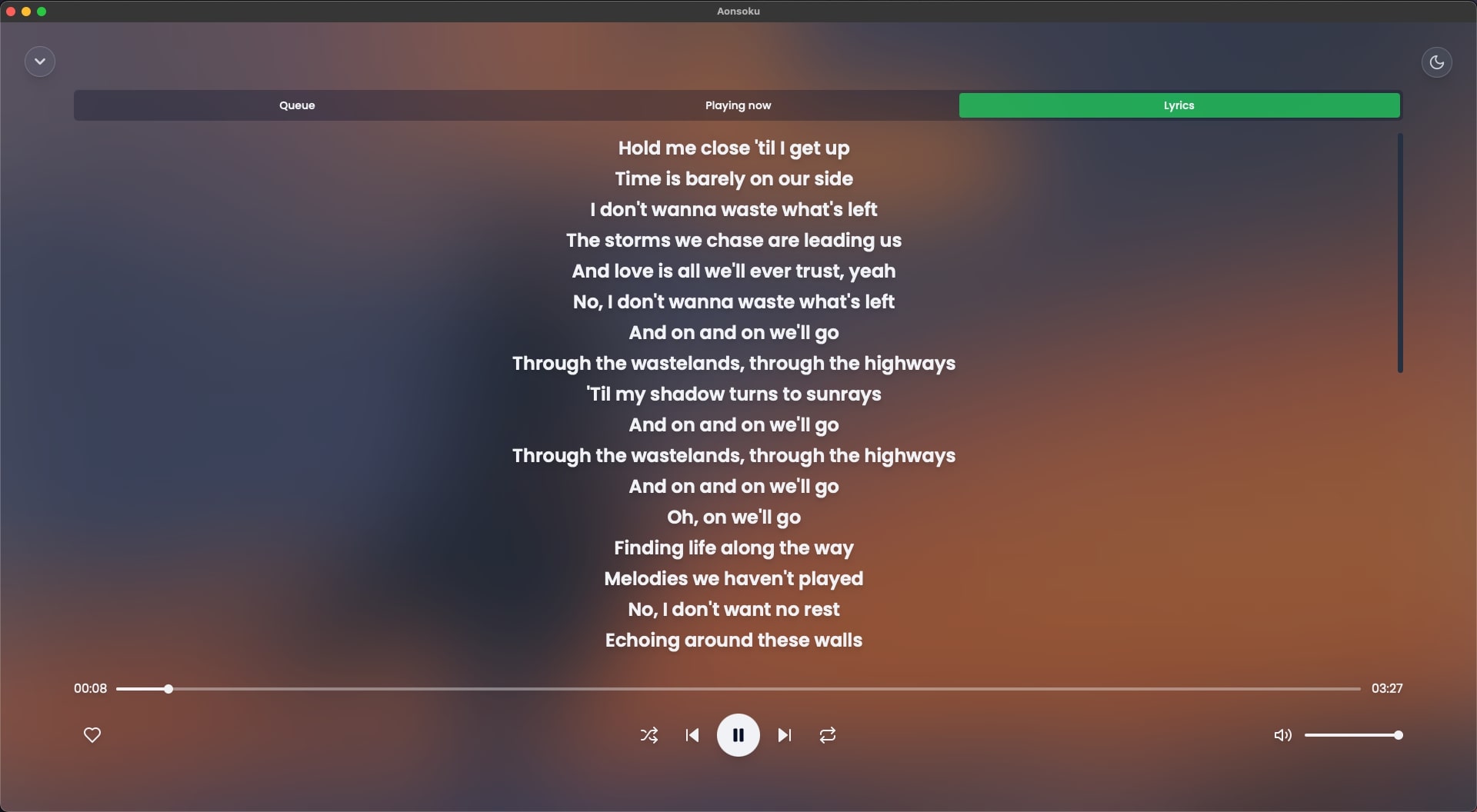A modern desktop client for Navidrome/Subsonic servers built with React and Rust.
Web App
·
Report Bug
·
Request Feature
Table of Contents
- Subsonic Integration: Aonsoku integrates with your Navidrome or Subsonic server, providing you with easy access to your music collection.
- Intuitive UI: Modern, clean and user-friendly interface designed to enhance your music listening experience.
- Unsynchronized lyrics: If your songs have embedded unsynchronized lyrics, Aonsoku is able to show them on full screen mode.
- Radio: If your server supports it, listen to radio shows directly within Aonsoku.
- Scrobble: Sync played songs with your server.
As Aonsoku is currently in early development, to use the desktop app you need to build it yourself.
- Node.js
- pnpm, npm or yarn
- Rust
- cargo
- Clone the repo
git clone https://github.com/victoralvesf/aonsoku.git- Install NPM packages
pnpm install- Install tauri-cli
cargo install tauri-cli- Web App
pnpm run dev- Desktop App
pnpm run tauri dev- Downloads:
- Playlist
- Album
- Artist
- Song
- Queue page
- Playlist editor
- Synced lyrics
- Podcast support
Feel free to request more cool features here.
Contributions are what make the open source community such an amazing place to learn, inspire, and create. Any contributions you make are greatly appreciated.
If you have a suggestion that would make this better, please fork the repo and create a pull request. You can also simply open an issue with the tag "enhancement". Don't forget to give the project a star! Thanks again!
- Fork the Project
- Create your Feature Branch (
git checkout -b feature/AmazingFeature) - Commit your Changes (
git commit -m 'Add some AmazingFeature') - Push to the Branch (
git push origin feature/AmazingFeature) - Open a Pull Request
Distributed under the MIT License. See LICENSE.txt for more information.








